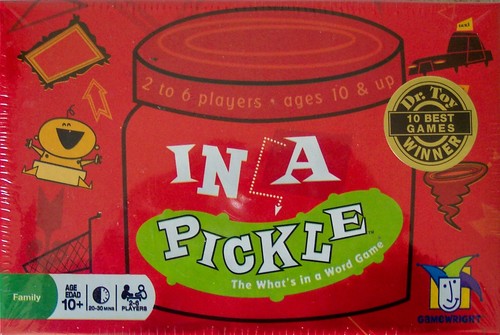After doing my post the other day on what makes a good critique, I thought I’d add a post on how my critique group works.

Different kinds of critique groups
I wanted to mention that my model is not the only model. There are probably even more than I have heard of.
1. Novel-at-a-time: The Novel-at-a-time group meets every 1-6 months. They critique entire novels at once. This is great for big-picture plot work.
2. Read-aloud: In the Read-aloud group, the group acts as an audience to the author who gives a reading of a section of their work. This is great for people without time to prep, and it really helps voice.
3. Chapter-at-a-time: The Chapter-at-a-time group looks at multiple author’s work every session, which they have critiqued ahead of time. This is the kind of group I am in, and I am going to discuss.
Organization
We are a group of peers, but there needs to be an organizational go-to person, so we have a moderator. In our group, this position is given out by succession, passed down in a direct line from the group’s founder. It’s maybe not the best way to do it, but we do it that way.
Our group is a drop-in group. We let anyone join, but the moderator does have the ability to ask someone to leave. During my 2 years as moderator, I never had to do this, but I did come close a couple of times. In both cases, the people decided they the group wasn’t for them before I had to step in. Over the course of things, we have met with as few as 3 people and as many as 12. In my opinion, 8 seems to be a good number for our group, as we always a a couple beginners.
We also have recently appointed a webmaster, who was the only person who could be talked into doing it. He’s very good though–don’t quit Dylan; we love you.
One trick I am really proud of: We always had trouble getting out the news on bad weather cancellations. So, I instituted a policy that if the local community college closed evening activities, we would not meet. The local CC is a commuter campus, so they err on the side of reason when it comes to bad weather. It also has a website, it’s own radio station, and it sends cancellation notices to the local TV station. If you don’t know whether or not they’ve cancelled, you’re just not trying. Also, it took away the burden of having to make the decision.
Before every meeting
Every week, the moderator sends out a newsletter to our email list, which is maintained by the moderator. The newsletter includes notes from the last meeting, any business that can be handled outside the meeting, and the schedule. Then people who have submissions for critique on the schedule that week do a reply-to-all to distribute their writing to the group. (Some people are a little paranoid about doing this and ask for a direct request. It works okay.) We critique 2-3 submissions a week of 5000 – 10000 words.
Start of the meeting
At the beginning of our meeting, we do three things: Introductions, Scheduling, and Victories. I am going to consider Introductions self-explanatory.
When the introductions are done, we talk about our Victories. A victory is defined a anything you do to advance your writing career, including rejections. This usually starts some interesting conversation.
Then we do Scheduling. We generally schedule out 3-4 weeks out. Sometimes, when multiple people are producing lots of pages, we have to make people wait for a turns.
The Critiques
Each critique is broken into four pieces: author setup, individual critique, author response, and general discussion. For us, the whole critique generally takes about 1/2 hour.
We start with Author Setup. Basically, the author gets a chance to tell the readers specific things that would be appreciated in the critique–this should also be included with their submission, making this more of a reminder. We mostly skip this part, as most people are looking for general response to the piece, rather than working something specific.
Then we move to Individual Critiques. We take turns giving our (up to) 3 favorite things about the writing and the (up to) 3 we think need the most work. This gives everyone a chance to talk uninterrupted. If another person agrees with what the reader says, they should call out “ditto.” We encourage the author to hold their peace during this time, but they can answer direct questions.
The Author Response is a time for the author to go over the suggestions made, and make any comments they might have. I think the key to this is to keep it (as) non-confrontational (as possible). Sometimes, things do get a little personal. Everyone has bad days.
General Discussion is a time to talk about specific ideas brought up in critiques, or to brainstorm. There are where you ask the, “Did anyone else think?” questions or “We all thought the chapter needed X. Does anyone have any suggestions?”
The Good and The Bad
It hasn’t always been smooth sailing. Occasionally, egomaniacs have joined the group, only to be disappointed that we didn’t love their work. We’ve lost great members because they felt ready to move on or had outside issues like health problems pull them away. We’ve had college students join to get us to grammar-check their homework and had to ask them to leave.
I’ve also seen one of the most abrasive, arrogant writers do a complete 180 and become a valuable member of the group and a much better writer for it. I’m glad he stuck with it, but it was a long road, and he was on double-secret probation more than once.
I’ve been with my group now for 5 years, during which I’ve become a reasonably good author (IMHO). I probably would have managed this one my own, but I’m not sure I would have done it as quickly. Belonging to my writing group has also allowed me to make contacts and meet some really interesting people.
I would like to leave this as my parting thought. When you finished being critiqued, I think it’s important to remind yourself that the things said by your readers are only suggestions, that most** of them aren’t out to get you, and that most** of them want to become a better writer.
* I was going to call this article “Critique Group Nitty Gritty,” but I found out that Nitty Gritty is a racial slur. I’m still in trouble for saying gypped in front of my Romani-activist friend. I suck at titles.
**Hey, there’s always going to be personality issues.
 Okay, It’s confession time. There’s a reason why I haven’t been updating this week. I’ve been sick as a dog. However, the reason I have been as sick as a dog is because of what I was doing last weekend.
Okay, It’s confession time. There’s a reason why I haven’t been updating this week. I’ve been sick as a dog. However, the reason I have been as sick as a dog is because of what I was doing last weekend.










